 "Climate refugees": the term refers to people whose distance dulls the pain of hearing their stories, like Shahana Begum of Bangladesh.
"Climate refugees": the term refers to people whose distance dulls the pain of hearing their stories, like Shahana Begum of Bangladesh. Shahana's family, like more than half a million people in the impoverished nation, lost her shanty home and all her belongings when cyclone Sidr slammed into southern Bangladesh in November 2007, claiming more than 3,500 lives.
"I moved to Dhaka because there was nowhere else to go," said Shahana, for whom home is now a slum on the dry banks of the capital's biggest river.
The country's leading climate change scientist says it is a sign of things to come. "It used to be that we would have a big cyclone every 15 to 20 years. We are getting a big one now every two or three years," said Atiq Rahman, who was on the UN's Inter-government Panel on Climate Change (IPCC). The Nobel Prize-winning IPCC predicts 20 million Bangladeshis will be displaced by 2050 because of sea level rises and an increase of natural disasters caused by changing weather patterns.
This tragedy could never happen in America.
Bangladesh, population 160 million, is among the countries most hard hit by climate change; an estimated 20 million people -- 1 in every 8 -- will need to be relocated by 2050 because of climate. Poverty and geography cause fragility: the country sits within the Ganges River delta, and 50% of the country would disappear if sea levels rise one meter. The news seems to be always bad -- famine, floods, erosion, lather, rinse, repeat. It's easy to become numb to words on a page. So we take pictures to explain what words cannot.
Shishmaref: "We are worth saving!"
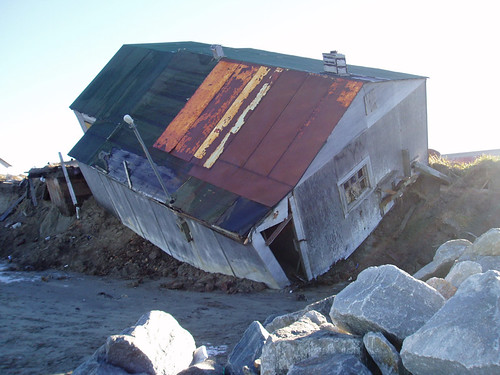
We are worth saving! begged the island village of Shishmaref, before abandoning their homeland altogether.
A villager who has lived most of his life in Shishmaref pleads: "This is our home, this is where we live, where I grew up. Over 100 years we have been at this site as Shishmaref, starting with the school and everything, but it’s been thousands of years since the Shishmaref people have been using this island as a pasture point for the ocean."

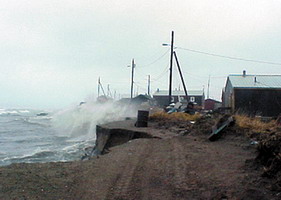 Note the placement of the trash can in the center of the "before" and "after" pictures. Erosion occurs along the entire island chain, but exacerbated at Sarichef Island in part because of the hydrographic impacts of hard armoring of a sandy shoreface and permafrost degradation, accelerated by human infrastructure. The island now plans to relocate to the Alaska mainland. Yes, you read that right: Shishmaref is a part of the United States, not Bangladesh.
Note the placement of the trash can in the center of the "before" and "after" pictures. Erosion occurs along the entire island chain, but exacerbated at Sarichef Island in part because of the hydrographic impacts of hard armoring of a sandy shoreface and permafrost degradation, accelerated by human infrastructure. The island now plans to relocate to the Alaska mainland. Yes, you read that right: Shishmaref is a part of the United States, not Bangladesh.Isle de Jean Charles: Deliberately abandoned by the Army Corps
At the opposite end of America, Louisiana loses land: 30 square miles every year. A long-planned Army Corps of Engineers project, Morganza to the Gulf of Mexico Hurricane Protection Project (also known as the Great Wall of Louisiana), would protect parts of Louisiana from storm surges and climate change. However, it was designed to abandon the Native American people of Isle de Jean Charles. In 2006, a levee district director explained that it was simply a question of money:

"The problem is, based on the cost-benefit ratio, it would cost too much to include that sliver of land. For the cost, you could buy the island and all the residents tenfold."
In effect, the government had to ask itself: is it worth $100 million or more to protect a shrinking spit of an island, its only road, its modest homes, some of them little more than shacks, and its 250 residents, whose families have lived here for generations? Its conclusion: no.
By fall 2009, the same tribe announced plans to abandon its island home, instead using 12 million dollars in federal aid to move 230 people 10 miles inland. The Great Wall of Louisiana may not even work, and there may come a time to abandon places larger than Isle de Jean Charles. The Army Corps of Engineers' chief recently acknowledged as much when asked whether New Orleans should be abandoned entirely? Without answering that question, he told a reporter: "Protect the city, no. Reduce the risk, yes."
Kivalina: Climate cover-up succeeds
This photo shows the impact of sea level rise on Kivalina, Alaska far better than any words can:
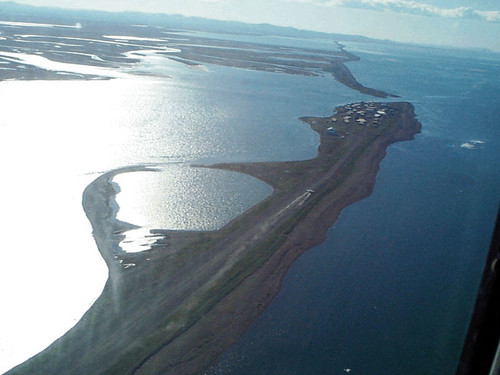
Kivalina's residents decided to fight back. They hired prominent lawyers to sue 24 large polluters. More important, the suit also accused eight of the firms (American Electric Power, BP America, Chevron, ConocoPhillips, Duke Energy, ExxonMobil, Peabody Energy, and Southern Company) of conspiring to cover up the threat of man-made climate change, in much the same way the tobacco industry tried to conceal the risks of smoking (as detailed in Jim Hoggan's recent, thoroughly researched Climate Cover-Up). On October 16, a federal district court judge dismissed (24 pg pdf) Kivalina's complaint (for legalnerds, the ruling was on political question and standing grounds). The plaintiffs plan to appeal to the Ninth Circuit.
Newtok: Broken people
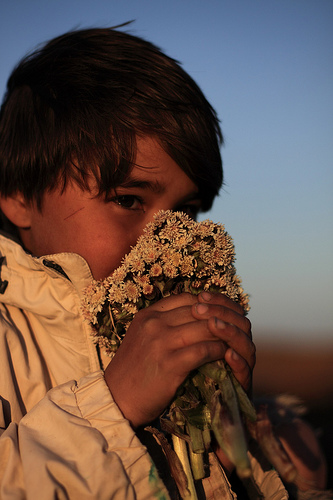 Newtok, Alaska is a village being squeezed between two rising rivers. It's lost an average of 72 feet a year to the water between the 1950s and 2005. Senator Lisa Murkowski (R-AK) compares the villagers to American Indians losing their ancestral homes:
Newtok, Alaska is a village being squeezed between two rising rivers. It's lost an average of 72 feet a year to the water between the 1950s and 2005. Senator Lisa Murkowski (R-AK) compares the villagers to American Indians losing their ancestral homes: "But what we're talking about here is the existence of a people. When they are separated from their land, they lose their language. They lose their culture. They lose their identify. And what do we have for it? Broken people."
"We saw that, to certainly an extent, with the American Indian when we took them away from the land and gave them reservations and said, 'Here, here's how we're going to make it even,' " she said.
America's broken and abandoned people are not limited to these four villages. In Alaska alone, 31 villages are imminently threatened by erosion, with 178 more communities -- including its largest city, Anchorage -- vulnerable to erosion. Even if they're all relocated, they're not legally "climate refugees" because they're not moving from one country to another. Climate refugees have been described as the third rail of climate policy. Under the Geneva Convention, a "refugee" is a person who flees from one country to another, such as the millions who have fled drought between Kenya and Somalia. The United States has no long-term relocation policy for people whose homelands become unlivable due to climate change. Instead, affected villages have been clamoring for federal and state money on an ad hoc basis.
The broken people of villages such as Shishmarek and Isle de Jean Charles have more in common with Shahana Begum and other Bangladesh people than they do with the average middle-class American: native people, practicing a subsistence lifestyle in a fertile land, being harmed by forces far away. To this middle-class American observer, they're the 21st century equivalent of Native Americans being forced off their homelands, through no fault of their own, and herded on to reservations.
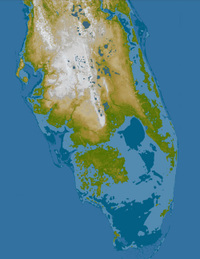 The Senate Environmental & Public Works Committee begins hearings tomorrow on the Kerry-Boxer bill, Most of the debate this week will be on its dollars-and-cents costs and benefits. Will Senators Murkowski and Begich of Alaska, and Landrieu and Vitter of Louisiana, demand justice for their people, or will they vote for their shares of oil contributions? Rising seas will not respect their votes.
The Senate Environmental & Public Works Committee begins hearings tomorrow on the Kerry-Boxer bill, Most of the debate this week will be on its dollars-and-cents costs and benefits. Will Senators Murkowski and Begich of Alaska, and Landrieu and Vitter of Louisiana, demand justice for their people, or will they vote for their shares of oil contributions? Rising seas will not respect their votes. Our treatment of poverty-stricken villages sets a precedent for how we will treat others affected by sea level rise. Will the residents of Dade County, Florida plead "We are worth saving!" or will they simply allow themselves to be meekly herded off their land? Will the Army Corps of Engineers ultimately decide that the costs of storm surge barriers and seawalls around this city are too high?
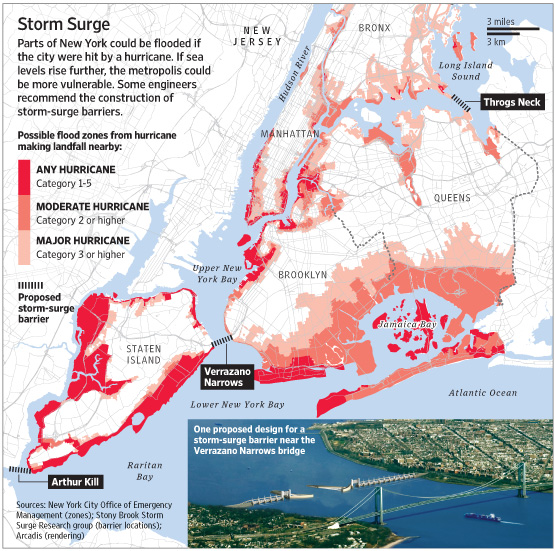
Or will we treat people with money different from people at the margins of American society?
No comments:
Post a Comment